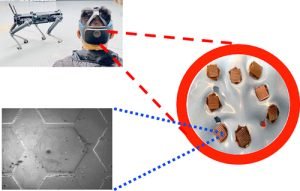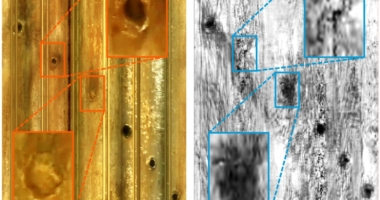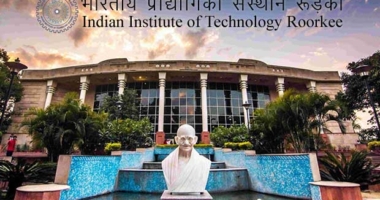Biosensor technology has been developed by researchers at the University of Technology Sydney in collaboration with the Australian Army and the Defence Innovation Hub. The technology uses graphene sensors combined with silicon to create wearable dry sensors that detect brainwaves from the visual cortex. This biosensor technology can control devices such as robots and machines using only the power of human thought. It has the potential to revolutionize various industries, including advanced manufacturing, aerospace, and healthcare, by eliminating the need for traditional interfaces and allowing for hands-free, voice-free operation. With continued research and innovation, we can expect to see more advancements in brain-computer interface systems that will reshape the way we interact with technology. The future of biosensor technology is bright and can improve the lives of people with disabilities while increasing the efficiency of industries.
Mind Over Machines: A Revolutionary Biosensor for Human-Device Interaction
The University of Technology Sydney (UTS) has collaborated with the Australian Army and the Defence Innovation Hub to develop a biosensor that could potentially transform how we interact with technology. Professors Chin-Teng Lin and Francesca Iacopi have created a cutting-edge brain-computer interface that enables the control of machines and robots using just the power of human thought.

The technology, which uses wearable dry sensors, has the potential to revolutionize various industries, including advanced manufacturing, aerospace, and healthcare. If widely adopted, traditional interfaces such as touchscreens, keyboards, and hand-gesture recognition could become obsolete. According to Professor Iacopi, the hands-free, voice-free technology works outside laboratory settings and is operable anywhere and anytime.
The advanced brain-computer interface is made possible by combining graphene material with silicon. The hexagon-patterned graphene sensors are highly conductive, easy to use, and robust, overcoming issues such as corrosion, durability, and skin contact resistance. The sensors are placed on the back of the scalp, and the user wears a head-mounted augmented reality lens that displays white flickering squares. By focusing on a specific square, the sensors detect brainwaves from the visual cortex. A decoder translates the signals into commands, allowing the operator to control machines and robots.
The Australian Army recently demonstrated the technology by having soldiers control a robotic dog from Ghost Robotics with up to 94% accuracy, resulting in hands-free command. The researchers have also developed ways to minimize noise from the body and environment to obtain clearer signals from the operator’s brain.
“Our technology can issue at least nine commands in two seconds. This means we have nine different kinds of commands, and the operator can select one from those nine within that time period,” explains Professor Lin.
The development of this biosensor technology has the potential to transform how humans interact with machines and robots, and the findings have been published in the journal ACS Applied Nano Materials.
Biosensor Technology: The Future of Human-Machine Interaction
Biosensor technology that allows for the control of devices using thought has the potential to revolutionize various industries, including advanced manufacturing, aerospace, and healthcare. This technology eliminates the need for traditional interfaces, allowing for hands-free, voice-free operation, and can improve the lives of people with disabilities.
The development of this cutting-edge technology by researchers at UTS has garnered significant interest from the scientific community, industry, and government. Continued research and innovation in brain-computer interface systems are expected to pave the way for a new era in human-machine interaction.
With the potential to increase the efficiency of industries and improve the quality of life for people with disabilities, the future of biosensor technology is bright. We can expect to see more advancements in brain-computer interface systems that will reshape the way we interact with technology.
Don’t miss interesting posts on Famousbio








